If you’ve ever had a car troubleshooter call and ask you what an EOBD or an On-Board Diagnostics means, this article can help you understand the terms better. Read on to learn the definitions of the terms EOBD and On-Board Diagnostics, and how they can benefit your vehicle’s health. In this article, you’ll also learn more about OBDII and Remote diagnostics.
On-Board Diagnostics
On-board diagnostics, or OBD, is a computer-based system that monitors the performance of key components in your vehicle. These diagnostics are made possible by the Electronic Control Unit (ECU), which receives input from sensors and actuators to regulate the vehicle’s performance. The OBD system has many uses, ranging from emissions testing to fleet management. The On-Board Diagnostics system also helps you to monitor fuel efficiency and identify unsafe driving habits.
The main goal of On-Board Diagnostics is to prevent a vehicle from breaking down or producing emissions, which could be hazardous to your health. This system is a cost-effective measure that can reduce risky driving behavior, improve efficiency, and control mileage expenses. However, it may be difficult to install and can be expensive to purchase. Some users may also find On-Board Diagnostics confusing. Since these systems are used to monitor a variety of variables, it can be confusing to determine which data is useful.
The On-Board Diagnostics system is comprised of a computer that monitors several key components in the car. The system can identify problems before a driver even realizes that there is a problem. This technology has been mandated in cars since 1996 by the U.S. Environmental Protection Agency. Even light-duty vehicles are required to have an OBD system. This system helps the driver understand what is happening inside the vehicle and what repairs need to be made.
EOBD
If you have ever been searching for EOBD meaning, you’ve probably come across the phrase “end of business day.” But what exactly does EOBD mean? The Internet has a number of acronyms, some of which are registered in multiple terminologies. One way to find EOBD definitions is by using the “related terminology” button located at the bottom of a mobile phone. This will bring up a list of EOBD meanings for the various terms. However, if you don’t know what a particular acronym means, you can also research the meaning using other methods, such as Wikipedia and Google.
In addition to the EOBD meaning, you may also be wondering what EO stands for. This acronym is a common business and internet slang term. You may not be able to determine its exact meaning without knowing the acronym’s definition. The Internet Slang & Acronym Database lists the meaning of EOBD and other slang terms. Fortunately, you can easily find out the meaning of an acronym by simply looking up the definition on the database.
Another common EOBD meaning is “end of business day.” As the name suggests, EOBD refers to the end of the day, while EOD stands for “end of the day.” A great example of an EOD term is a college report deadline. If you submit your report before 11:59 pm, you’re technically on time. A common misconception is that midnight is the end of the day, when in reality, it’s just the beginning of the next day.
OBDII
If you are interested in learning more about the On-Board Diagnostics II (OBDII) system, you can start by finding the definition of the word. This acronym stands for “On-Board Diagnostics II”. It is a system for accessing information about the engine control unit of a vehicle. It can also provide valuable troubleshooting information. In the standard that defines OBD-II, the procedure for requesting diagnostic information is defined. PIDs, or parameter identification numbers, are the codes that identify available parameters on a car. Although the standard defines a set of standard PIDs, manufacturers are not required to implement them all. They can use proprietary PIDs, however, if they feel they are necessary for the vehicle.
A good OBD-II code reader will be able to quickly identify a malfunction and give the owner the necessary information to fix it. OBD-II scan tools plug into an OBD port, typically found on the steering column or under the glove box. While these devices can be useful for diagnosing a problem, they aren’t the only option. OBD-II code readers can also identify the meaning of specific trouble codes.
OBDII is a standardized system that allows external electronics to interface with the car’s computer. As cars become increasingly computerized, the importance of OBD-II has increased. Software is the key to fixing many problems, as well as unlocking performance. The on-board diagnostic system was developed as a way to regulate emission levels. The widespread use of electronic fuel injection began in the early 1980s, and the resulting technology made it possible to identify potential problems early on in a vehicle’s life cycle.
Remote diagnostics
The automotive on-board diagnostics (OBD) market is booming, with semiconductor device and sensor developers vying for market share. With the growth of telematics and autonomous vehicles, interest in this technology is growing and OEMs are finding new revenue streams through OBD. Here are three of the most promising technologies:
OBD-II-based sensors. These new sensors are not easy to diagnose with a lab scope, but they will generate multiple PIDs digitally via a single wire. When these sensors fail to communicate, they will generate U-codes. One such technology is Serial Edge Nibble Transmission, which is already being used in several 2016 models. These new sensors will not only improve the diagnostic process but also improve the safety of vehicles.
Remote diagnostics for OBD port dongles. These dongles can send data to a remote specialist’s PC. Dedicated OBD software with integrated EPVT technology allows the remote specialist to read information as if the port were directly connected to the PC. However, these dongles aren’t practical to install in every car. You’ll only need them when a problem arises. There are other benefits of remote diagnostics for OBD.
OBD-II diagnostic tools. Unlike the conventional diagnostic tools, remote vehicle diagnostics tools can work with most OBD-II connectors. They’re easy to install and use, and they can work with Windows, Mac, Linux, and Linux systems. The technology can be used by automotive component suppliers, vehicle manufacturers, and local mechanics to test systems during production. However, local mechanics may have to call in expert help when troubleshooting. In such cases, remote diagnostics can help them resolve problems without having to leave the comfort of their homes.
EOBD thresholds
The EOBD thresholds are set to detect malfunctions, and they depend on many factors, such as engine speed, engine load, target wheel learning degree, and temperature. The parameters used in determining the threshold depend on the engine’s capabilities, and they require calibration for each vehicle model. Hence, the manufacturer must make sure that they use the best monitoring method to determine the threshold. But the manufacturer can request a higher threshold when necessary.
The EOBD thresholds are defined by a series of parameters, including the initial flat section. The initial flat section is designed to authorize stop-and-start after a difficult start. These parameters are represented by the values of “InitEOBD” and “DistEOBD” on the ordinate axis. The slope, or SlopeEOBD, is calculated as the difference between the two initial values of the EOBD thresholds, and it is used to determine compliance with the EOBD standard.
The next step in meeting EOBD thresholds is to ensure compliance with the various regulations that apply to automobiles. These regulations are intended to protect the environment and increase vehicle performance. California, for example, has a mandate that cars comply with a minimum threshold of CO2 emissions. As of January 1, 2018, the Euro 6 OBD legislation has been enacted. It also defines what constitutes a faulty part. The certification process is the same as the one for OBD II.
On-Board Diagnostics codes
If you’re not familiar with on-board diagnostics codes, here are some things you should know. Codes are a way to identify problems with the car’s electronic systems, such as the engine’s fuel system. If you don’t have a mechanic handy, you can always use a digital volt meter to test these codes. These codes indicate that the car’s computer is not working properly.
Most OBD codes have 5 characters: one letter, four numbers, and the cause of the problem. These codes are broken down into subsystems and systems. Some of the most common codes are listed below: P0128 is for incorrect engine temperature; P0133 indicates slow oxygen response. P0171 is a problem with the air/fuel mixture; P0174 indicates the fuel system is lean; and P0302 is for misfire in cylinder two.
P0070 is an example of an on-board diagnostics code. This code indicates a failure in one or more of the monitored engine parameters. In addition to the diagnostic trouble code, the code contains a freeze-frame – a collection of engine and vehicle parameters that are stored in non-volatile memory. This freeze-frame is useful in understanding the root cause of failure. The parameters include engine speed, load, and temperature.
A malfunction in the fuel system can be expensive, so you want to fix it as soon as possible. An automatic notification system can give fleet managers a quick insight into what is causing the trouble. And if you don’t have a mechanic to fix it, you can always rely on your car’s on-board diagnostics. This will save you from waiting for the drivers to report the problem. So, if you’re looking to save money on car repairs, on-board diagnostics codes may be the way to go.


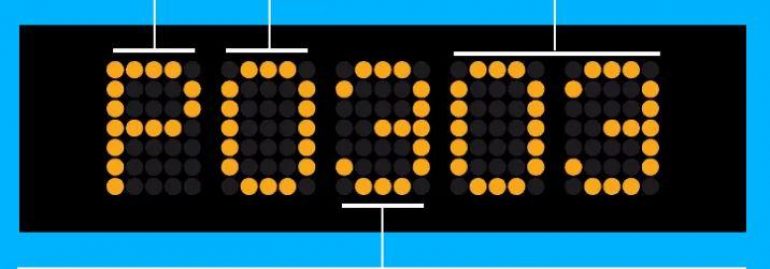
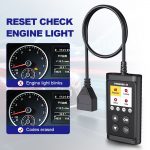
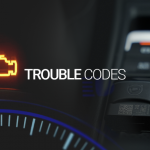
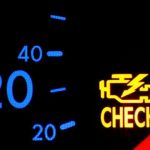
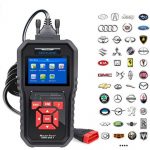
I have a high oil level alarm on idrive and was wanting to reset it. I opened a page and it reads DCTs, freeze frame data and resets IM monitors is this were i want to be. I am scared i will delete something i shouldn’t.